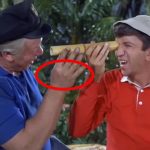Mae West and Raquel Welch are two Hollywood sex symbols from two completely different eras. However, their two worlds collided in 1970, when they both appeared in a film by the name of Myra Breckinridge. While one might think that the meeting of these two generational figureheads might’ve been a happy occasion, it was anything but! The two could be found butting heads over the course of the film’s productions, and the film itself was a disaster. Gore Vidal was the writer of the book the film was based upon, and his unlikely association only adds to the whole episode’s hilarity. Join Facts Verse as we explore how this Mae West and Raquel Welch feud caused their movie to flop.
Myra Breckenridge Is Remembered for the Wrong Reasons
In 1970, 20th Century Fox released a film by the name of Myra Breckenridge. The film was based upon the novel of the same name by legendary scholar Gore Vidal, and it’s satirical plot was decidedly controversial. The controversy of the novel had helped to boost both it’s sales and Gore’s overall profile, and it was only a matter of time before Hollywood decided that it wanted to be a part of this lucrative controversy. The novel was released in 1968, after which point Gore’s face could quickly be found gracing the covers of literary magazines debating over whether or not the novel was offensive or progressive. Within two years, the film rights would be purchased and an adaptation would be released to the public. Gore had no involvement in the film adaptation, and would go on to renounce it as garbage.
Today, the film adaptation of Myra Breckenridge isn’t notable for the fact that it was adapted from a work by the late Gore Vidal. Nor is it especially notable for it’s controversial plot, which revolves around a disenfranchised trans woman. Instead, it’s notable for the fact that it featured the pairing of two sex symbols from two very different generations. The film featured then-modern sex symbol Raquel Welch in the titular role, and it featured Golden Age sex symbol Mae West in the supporting role of Letitia Van Allen. If the promise of seeing Gore Vidal’s satirical novel adapted to the screen wasn’t enough to draw in audiences, 20th Century Fox hoped that the unlikely pairing of Mae West and Raquel Welch would be. Sadly, they were mistaken. Not only that, but the film’s production sparked a feud between the two actresses that ended up lasting until the point of Mae West’s death.
The film Myra Breckenridge was meant to be a satire on Hollywood, but it didn’t end up striking a chord with audiences. Though the film was intending to be progressive in it’s approach to the subject matter, it is more notable nowadays for being unintentionally offensive thanks to it’s depiction of the title character. For one thing, a real-life woman plays the title character. For another thing, the whole concept is played for laughs. The offensive nature of Myra Breckenridge may be what draws criticism from audiences today, but the film was simply a bore to audiences upon it’s release. Queer audiences that can stand the unintentionally offensive aspects of the film have grown to appreciate it for it’s camp appeal, much of which comes from it’s two stars. The fact that Mae and Raquel became embroiled in a feud during the picture’s production only adds to this appeal.
Raquel Controls the Narrative on Her and Mae’s Feud
Between Mae West and Raquel Welch, Raquel is the only one that’s still around. Because of this, Raquel has been given the opportunity to control much of the narrative when it comes to the feud between her and the late Mae West. According to Raquel herself, the feud started as a result of Mae not wanting to work with her. Of course, there was likely a good deal of professional jealousy involved in Mae West not wanting to be around on set with her younger costar. Raquel claims that Mae West had it written in her contract that she would only work in the evening, and this intentionally conflicted with the hours that Raquel was willing to work. Because of this, Mae and Raquel were rarely on set together during the film’s production. Still, Mae found ways to antagonize Raquel without actually being there in person.
Raquel Welch says that her and Mae West only filmed one scene together in total for Myra Breckenridge. This was due to the fact that Mae didn’t want to work with Raquel. It’s not hard to figure out that this was likely because Mae was threatened by Raquel’s popularity. Though the two were rarely forced to interact over the course of the film’s production at Mae’s own behest, that didn’t stop the Golden Age icon from attempting to exercise control over Raquel’s wardrobe from the shadows. If you’re enjoying this video so far, be sure to hit the like button to show your support! Also, subscribe to the channel if you’d like to be among the first to know when more Facts Verse videos are on their way!
Mae West Was Allegedly Jealous of Her Younger Costar
At Mae West’s insistence, her and Raquel Welch weren’t forced to be on set together very often during the filming of Myra Breckenridge. However, that level of control wasn’t enough for Mae West. Mae also wanted to ensure that she was the only star in the film that was afforded the opportunity to wear what she referred to as a “non-color”. One day of shooting, Raquel Welch was set to go in front of the cameras in a black dress. When she went to her dressing room to put the dress on, she found that it wasn’t there. After much prying, it was revealed that none other than Mae West herself had taken the dress out of her dressing room. Mae’s reasoning was that she was wearing a white dress, and that both black and white were non-colors. Raquel couldn’t be wearing a non-color dress in the same film where Mae was wearing one, at least according to the Golden Age star.
If Raquel Welch is to be believed, she wasn’t all that personally upset by the incidents that occurred on the set of Myra Breckenridge involving Mae West. Raquel claims that she simply felt bad by how apparently afraid of her Mae West was. It makes a lot of sense that Mae would’ve been intimidated by Raquel, as Raquel was a popular sex symbol of the time. Mae West had risen to prominence as a sex symbol many decades prior, and she was understandably nervous about sharing the screen with the much younger star. Even if Mae West wasn’t quite as young and attractive as Raquel was at the time of Myra Breckenridge’s filming, the Golden Age icon had much more than just her looks to be proud of. Still, she couldn’t get past her insecurity.
The on-set turmoil between stars Mae West and Raquel Welch certainly didn’t help when it came time for Myra Breckenridge to be released to the public in 1970. Films with rocky productions rarely ever turn out great, and this show-business satire was no exception! The film was famously derided by Gore Vidal himself, who was always keen to point out the aforementioned fact that he had no technical involvement with the film adaptation of his controversial novel. The film certainly didn’t help the careers of either Mae or Raquel on the big screen. However, Mae had already done enough by that point that her legacy was solid.
Mae West Had Little Reason to Be Intimidated
Mae West was born in the 1890s, and she grew up in vaudeville thanks to her parents. As an adult, Mae West began performing in dramatic plays of her own writing. These plays took off, and one of them ended up catching the attention of Hollywood executives. Mae’s first film was Night After Night, which premiered in 1932. Though Mae’s role in the film wasn’t large, she made a large impression on the audience. For her next picture, Mae was given the opportunity to star in a film adaptation of one of her own plays. The result was 1933’s She Done Him Wrong, which was a major success! The film was even one of the very first to be nominated for Best Picture at the Academy Awards.
Though She Done Him Wrong was a huge hit, it was also slightly controversial due to some adult themes. The same could be said of Mae’s follow-up work, No Angel. Many credit these two works with inspiring the creation of the Motion Picture Production Code. Mae West left Hollywood behind during the early 1940s, and one of her reasons for doing so was because she felt infringed upon by censorship.
Following her leave from Hollywood in the early 1940s, Mae West fled to the stage. There, the groundbreaking performer was given more creative freedom. She ended up returning to Hollywood when she felt that the censors were finally starting to let up. She viewed Myra Breckenridge as being a progressive work worthy of taking part in, and it’s sad that she wasn’t able to get along with Raquel Welch over the course of the film’s production. Given that Raquel Welch was one of the defining sex symbols of the new generation, it seems that her and Mae West would’ve had quite a bit to talk about! However, if Raquel Welch is to be believed, Mae West couldn’t come down to Earth long enough to make this happen. Mae West’s last appearance in a film would come only several years after the release of Myra Breckenridge.
Mae West’s last film appearance was in 1977’s Sextette, which was another provocative film that the sexually progressive Mae West found worthy of her iconic presence. Following the release of the film, Mae suffered a number of strokes and ended up passing away in November of 1980. At the time of her death, she was 88 years old. Raquel Welch is still around, and still talks about her and the late star’s feud!
According to sex symbol Raquel Welch, she intimidated Golden Age icon Mae West on the set of 1970’s Myra Breckenridge. Now it’s time to hear from you: did know that Gore Vidal called Myra Breckenridge a terrible movie, and that the film featured the multi-generational paring of sex symbols Mae West and Raquel Welch? As always, like this video to show your support, and subscribe and hit the notification bell if you’d like to be among the first to know when more Facts Verse videos are on their way!


